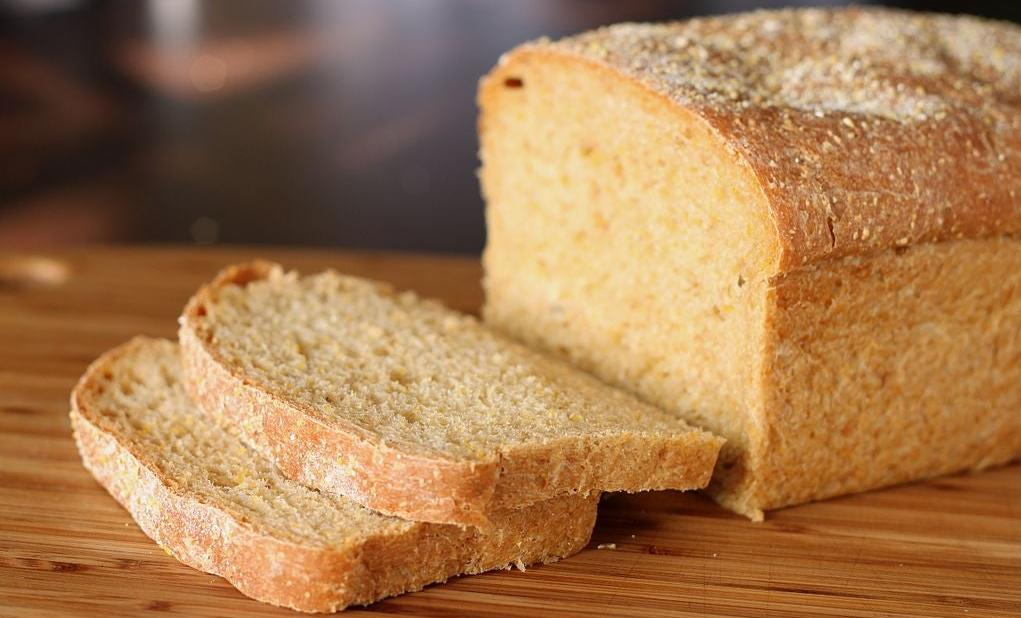New England's Anadama Bread Has An Unusual Origin Story
Legend has it that Anadama bread was invented by a frustrated husband.
We may receive a commission on purchases made from links.
No one knows who Anna is, nor who she was married to. But that doesn't really matter. All you need to know is this: One night the couple, whoever they were, had a fight, and their argument resulted in the creation of one of the most beloved dishes of coastal New England.
What is Anadama bread?
Anadama bread is a yeasted loaf made with molasses and cornmeal. It has just a touch of sweetness but is still savory enough for sandwiches. The name, according to Yankee magazine, first appeared in print in 1915—but it's likely much older than that.
"The history of Anadama goes way back," says Melissa Abbott, whose family has been responsible for supplying Anadama bread to the coastal fishing communities of northern Massachusetts and beyond for most of the 20th century. "There's all these different stories about it. This could easily have been as far back as the Revolutionary War time. We don't really know."
Abbott explains that, as legend goes, there was a Rockport fisherman, Joe, "and his lazy wife, Anna," who either couldn't cook well or simply wasn't interested in kitchen labor.
"You've got to remember, they didn't have a lot to eat," Abbott says. What settlers and early Americans in New England did have in abundance was cornmeal, a staple of Indigenous diets, and molasses, a byproduct of rum distillation. The latter was plentiful because of New England's role in the triangle trade, which brought enslaved people from Africa to the Caribbean and South America, then took sugar cane from those areas to New England to be made into rum, which was then transported back to Africa.
"They would have hogsheads [large barrels] of molasses, and the very lowest part of the hogshead had really thick molasses—that was cheaper, the really deep, thick stuff," Abbott says. People would keep a pot of this cut-rate molasses on a woodstove, and "they'd just keep throwing things into it."
"It was always corn mush and molasses," she explains. "That was a thing people ate. If they didn't have anything else to eat, they'd eat that."
Fisherman Joe, the legend goes, had eaten his lifetime fill of it. In a fit of anger one night, he took the cooking into his own hands, adding yeast and flour to the mix, all the while muttering "Anna, damn her" as it baked.
"The neighbors who baked it called it Anadama, but it was really 'Anna, damn her' bread," Abbott explains. Other locals started making the recipe, and it grew more and more popular. That's where Abbott's own family comes into the picture.
Her great grandmother, Melissa Collins, arrived in Rockport, Massachusetts, in the 1920s; it was the midst of the Great Depression, and Collins had recently shuttered the restaurant she owned. Seeing that a local blacksmith shop was for sale in Rockport, she and her husband bought it and turned it into the Blacksmith Shop Restaurant. Old wagon wheels served as tables, and at each one there was a loaf of Anadama bread, which they also sold in the restaurant's bakery. They knew they were serving a dish with a long history, even if they couldn't pinpoint its origins.
"In the 1960s my grandmother used to say it was a 150-year-old recipe," Abbott says.
Later, Abbott's grandparents took over the business, opening more restaurants and, eventually, a bread factory with 75 employees and 45 trucks that distributed Anadama bread throughout New England.
"They stopped baking in the early 1970s when my grandfather died, but people of a certain age remember it was as big as Pepperidge Farm," Abbott says.
Where to find Anadama bread
Because everyone in the area knew of Abbott's connection to the beloved local food, they often asked her for recipes, not just for the bread, but for other traditional New England foods like cod cakes, finnan haddie, and Indian pudding. Eventually, she decided to write a cookbook filled with her family's dishes: The Legacy of the Three Melissas: Authentic and Original Cape Ann Recipes.
While people, especially those north of Boston, remember the bread fondly, it's hard to find in bakeries these days. Whereas molasses and cornmeal were once plentiful and cheap, they've both become more expensive over time.
"Every once in a while a bakery will start making [Anadama bread], but it's never the same because people don't know how to make it," Abbott says. One trick her grandmother passed down to her is to use the thickest, darkest molasses you can find and let it sit in the cornmeal overnight.
"That expands the molecules of the cornmeal and it infuses the molasses in it," Abbott says. "So then when you make the bread and you add yeast, flour, salt, butter, and all that stuff, then you get this really unbelievably delicious bread."
